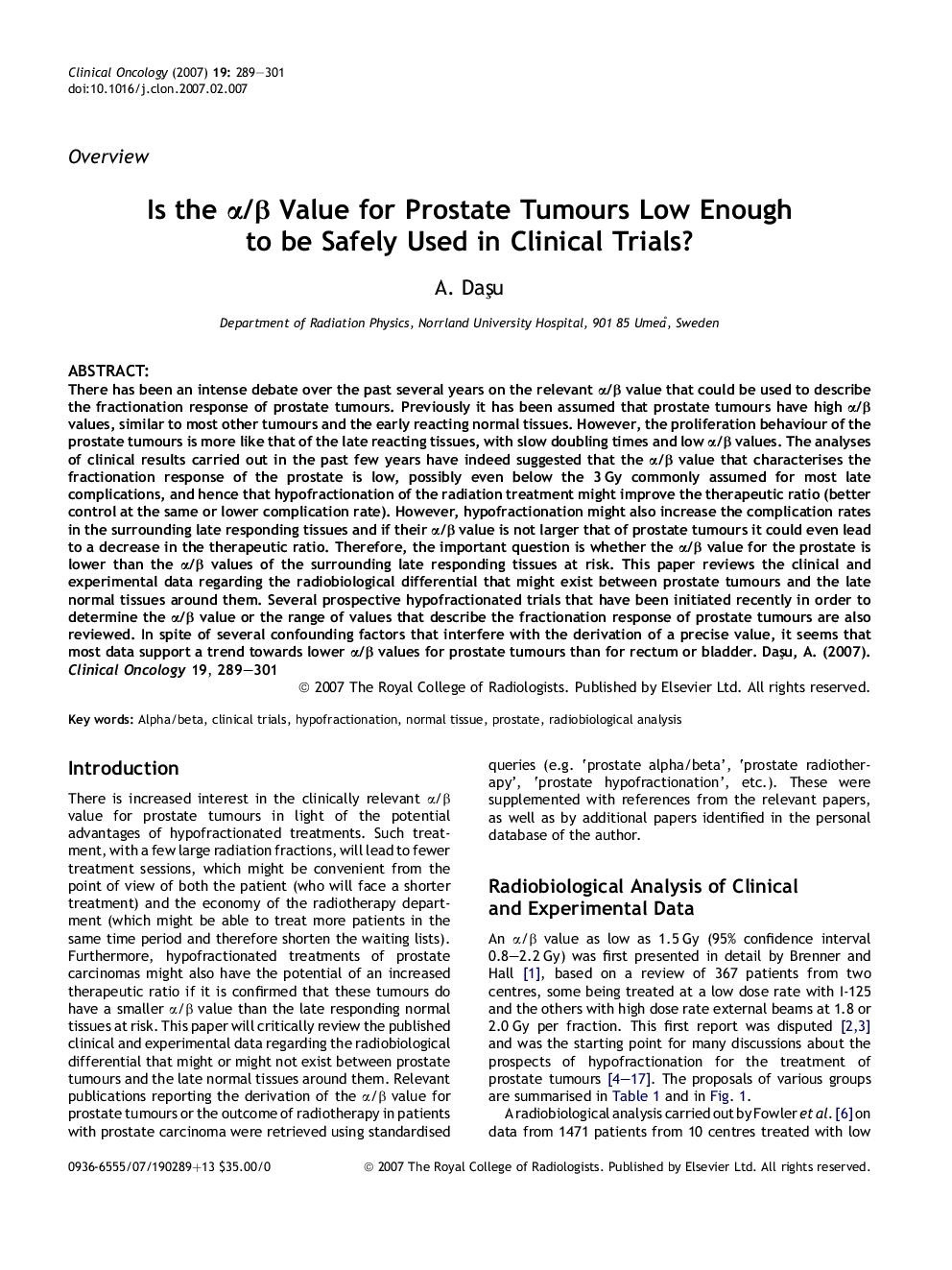| Article ID | Journal | Published Year | Pages | File Type |
|---|---|---|---|---|
| 5699782 | Clinical Oncology | 2007 | 13 Pages |
Abstract
There has been an intense debate over the past several years on the relevant α/β value that could be used to describe the fractionation response of prostate tumours. Previously it has been assumed that prostate tumours have high α/β values, similar to most other tumours and the early reacting normal tissues. However, the proliferation behaviour of the prostate tumours is more like that of the late reacting tissues, with slow doubling times and low α/β values. The analyses of clinical results carried out in the past few years have indeed suggested that the α/β value that characterises the fractionation response of the prostate is low, possibly even below the 3 Gy commonly assumed for most late complications, and hence that hypofractionation of the radiation treatment might improve the therapeutic ratio (better control at the same or lower complication rate). However, hypofractionation might also increase the complication rates in the surrounding late responding tissues and if their α/β value is not larger that of prostate tumours it could even lead to a decrease in the therapeutic ratio. Therefore, the important question is whether the α/β value for the prostate is lower than the α/β values of the surrounding late responding tissues at risk. This paper reviews the clinical and experimental data regarding the radiobiological differential that might exist between prostate tumours and the late normal tissues around them. Several prospective hypofractionated trials that have been initiated recently in order to determine the α/β value or the range of values that describe the fractionation response of prostate tumours are also reviewed. In spite of several confounding factors that interfere with the derivation of a precise value, it seems that most data support a trend towards lower α/β values for prostate tumours than for rectum or bladder.
Related Topics
Health Sciences
Medicine and Dentistry
Oncology
Authors
A. DaÅu,
